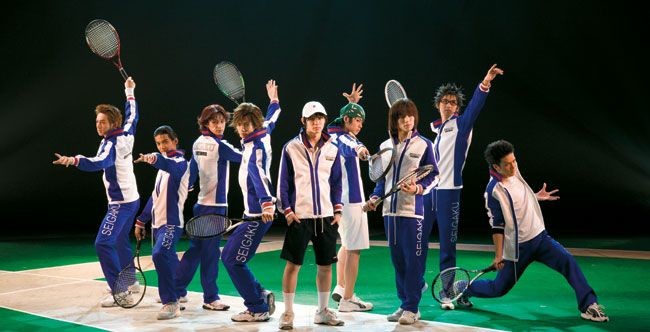The Second and a Half Dimension

I had never heard the phrase "2.5-D fandom" before, but it's the subject of Japanese scholar Akiko Sugawa-Shimada's work:
The term 2.5-D was coined by anime fans in Japan in the 1980s to refer to animes voice actors, but in the 2000s it began to refer to some cultural practices exercised in a space between 2-D fiction and 3-D reality. Thus, the 2.5-D culture is cultural practices which produce the fictional space of contemporary popular cultural products (such as manga, anime, and videogames) along with the fans interplay between the real and fictional spaces. Its examples are: 2.5-D theaters (theatrical adaptation of anime, manga, and videogames), cosplay, contents tourism (pop-culture-induced tourism), character/voice actor concerts (ex. concerts of Love Live! and Ensemble Stars, etc.), enjoei (a cheer-a-long style of movie screening), and V-tubers (virtual YouTubers). What matters in these cultural products are active interactions between the reality of characters of anime/manga/videogames and the virtuality of the human bodies of practitioners (actors and fans). As in Henry Jenkins's 'convergence culture,' 2.5-D culture is generated across multiple transmedia platforms, cooperation of multiple media industries, and fans migratory behaviors. Fans actively migrate among the fictional, cyber, and physical worlds."
If I’ve got it, it’s a kind of cosplay slash Rocky Horror-style performance theater, but raised to the level of a pop musical industry.
The first successful manga-based musical production was The Rose of Versailles in 1974 by the Takarazuka Revue. At the time, these plays were simply known as “musicals” or “anime musicals.” Around the 1990s, a number of musicals and small stage skits produced were based on anime and manga series aimed at elementary school girls, such as Sailor Moon, Akazukin Chacha, and Hime-chan’s Ribbon, which performed moderately well, but were not popular and were known as “musicals for elementary school girls” (, joji mono). However, in 2000, Hunter x Hunter was considered revolutionary for the time because the voice cast for the original anime series had also played the characters onstage.
Having only seen YouTube clips of these plays, I guess I wonder mostly about the name: why 2.5-dimensional? Obviously these are plays that try to split the difference between an original two-dimensional work and a three-dimensional performance, and fidelity to the original is considered a primary virtue… thus keeping the performances somewhat “two-dimensional”? But I wonder if there is something more than this, something in the staging or craft of the theater that intentionally either restricts or enhances the dimensionality of the experience. At any rate, it has my attention.





Stay Connected